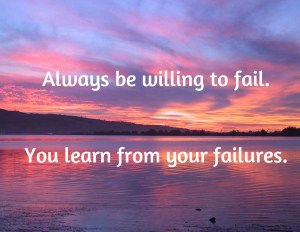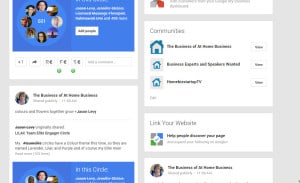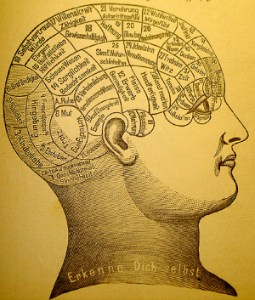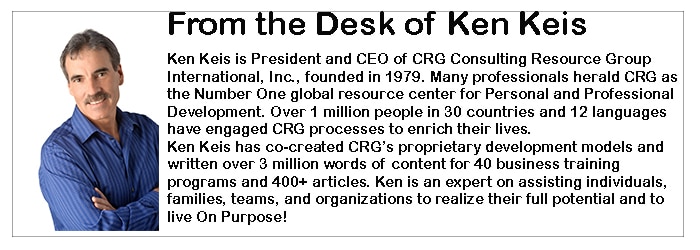Data on Googleplus Engagement
Get Started
Get Started
From James Cleary article:
In 1966, a dyslexic sixteen-year-old boy dropped out of school. With the help of a friend, he started a magazine for students and made money by selling advertisements to local businesses. With only a little bit of money to get started, he ran the operation out of the crypt inside a local church.
Four years later, he was looking for ways to grow his small magazine and started selling mail order records to the students who bought the magazine. The records sold well enough that he built his first record store the next year. After two years of selling records, he decided to open his own record label and recording studio.
He rented the recording studio out to local artists, including one named Mike Oldfield. In that small recording studio, Oldfield created his hit song, Tubular Bells, which became the record label’s first release. The song went on to sell over 5 million copies.
Over the next decade, the young boy grew his record label by adding bands like the Sex Pistols, Culture Club, and the Rolling Stones. Along the way, he continued starting companies: an airline business, then trains, then mobile phones, and on and on. Almost 50 years later, there were over 400 companies under his direction.
Today, that young boy who dropped out of school and kept starting things despite his inexperience and lack of knowledge is a billionaire. His name is Sir Richard Branson.
If you wait for your plan or idea or process to be perfect, you will never get started.
Always be willing to fail. You learn from your failures
Google Plus Communities live on Profile
Communities on The Business of At Home Business Page
Now, on October 7, 2014, Google has finally turned on the ability to show your Communities on your Business Page.
What a great way for your interested customers to find you!
Thanks, Google.
Now, all i have to do is share my Business page link for anyone wanting to join my Community instead of having to send them a COLD invitation.
Wow! great idea, Google.
Youtube spread your message

Video is the way to go if you want to grow your business.
According to Youtube (2014) Statistics
Viewership
- More than 1 billion unique users visit YouTube each month
- Over 6 billion hours of video are watched each month on YouTube—that’s almost an hour for every person on Earth
- 100 hours of video are uploaded to YouTube every minute
- 80% of YouTube traffic comes from outside the US
- YouTube is localized in 61 countries and across 61 languages
- According to Nielsen, YouTube reaches more US adults ages 18-34 than any cable network
- Millions of subscriptions happen each day. The number of people subscribing daily is up more than 3x since last year, and the number of daily subscriptions is up more than 4x since last year
YouTube Partner Program
- Created in 2007, we now have more than a million creators from over 30 countries around the world earning money from their YouTube videos
- Thousands of channels are making six figures a year
Monetization
- Thousands of advertisers are using TrueView in-stream and 75% of our in-stream ads are now skippable
- We have more than a million advertisers using Google ad platforms, the majority of which are small businesses
Mobile and Devices
- Mobile makes up almost 40% of YouTube’s global watch time
- YouTube is available on hundreds of millions of devices
If you aren’t creating video showcasing you and your products and services, you are missing a very large audience. The Video above shows how to quickly setup a Youtube account and how to upload a video.
Start today! You are not sending your message out if you aren’t doing video and the audience for video is larger and getting larger. We will have more information on Video and Youtube so subscribe to The Business of At Home Business newsletter to get more information. As you can tell, by this website, I love video and I will always be keeping up with the changes in video.
Special Reports
Build your List and Make Money
Does your business enterprise need a boost? Consider using special reports to add revenue and build a business contact list for future use.
What are special reports?
Special reports are short reports that contain helpful information on a subject. The reports are anywhere from a few to 30 or so pages in length. If you have the know-how, you can write them yourself or hire a writing service to do it for you. There is very little work involved in creating them but they are versatile tools for building an online business.
One popular subject for special reports is how-tos. They direct a reader, step by step, how to do something. If you are knowledgeable with computer software and hardware, that is a perfect niche for special reports on your website. People are always having trouble figuring out their computers and you could help.
Marketing special reports
There are options for marketing your special reports. If you are trying to build a business list of customers, use these special reports as a freebie when any visitor signs up to be a part of your email mailing list. For this type of promotion, use a shorter report like a five page report on how to navigate problems with Windows Vista (if your website has a computer niche).
You can create a five-part course and use the first part as the free promotion. It is your hook. Once they sign up for the mailing list, you can grant them access to the other installments through emails that also advertise your website products. Signing up for a business newsletter subscription can also be the reason to gift a free special report.
Making money
All of your special reports don’t have to go towards list building. Besides your other products or services, you can sell special reports on your website. Many reports sell for between $5 and $20 a piece, but if you offer very valuable information, you can command a higher price. Sell single reports or create various courses to interest your customers.
People love to learn about money-making opportunities. They will pay the money for any information that is a how-to guide to making money on and offline in various ways. How have you made money? Begin there with the subject of your special reports.
As your business grows, create an affiliate program. This gives customers a way to help you make more money and also make some for them. Offer certain special reports as additional compensation for reaching a certain selling level in the affiliate program.
There are a number of ways to use special reports. As you build your library and your lists, alternate the free promotional reports and continue to sell your entire library, creating combination offers such as Buy Two, Get One Free.
While your special reports are building your contact list, they are also making you money. With such a low cost to create them, your profit margin will rise.
For more marketing tips, subscribe to The Business of At Home Business newsletter.
5 Powerful Mind Success Strategies
5 Powerful Mind Success Strategies
Building a business is a fantastic and challenging experience. You can wake up exhilarated to begin your day and go to bed feeling overwhelmed and frustrated. The key to success is to maintain a positive, yes you can do it, mindset.
Easier said than done, right? Here are 5 keys to help you create and sustain a positive mindset so you attain the success you desire.
1. Surround yourself with successful and positive people. The influence people have over our own personal energy is amazing. Moods and attitudes are so easily spread – think about how much of a difference a simple smile from a stranger can make for your day and then magnify it 1000 times to demonstrate the power of positive and successful friends, family and associates. When you have people around you who inspire you, believe in you and want you to succeed, there’s no room for doubts and even when they creep up, they’re quickly swept away.
2. Create a mantra or an affirmation. Repeating positive affirmations has been shown to get people through tough times and to actually help them truly believe what they’re saying.
For example, “I am building a powerful and profitable business.” Many of the most esteemed business professionals have used the same affirmation strategy to attain their success. To find the right affirmations for you, consider writing a quick list of your doubts, insecurities and complaints. These can then be quickly turned into affirmations.
For example,
if you write that you’re always feeling disorganized then your affirmation would be, “I am organized and in control.” Repeat your affirmations several times a day and feel the power of positive thinking.
3. Capture negative thoughts. We all have negative thoughts from time to time, however, negative thoughts and emotions can derail us and prevent us from achieving all we desire. Of course catching those negative thoughts takes practice and persistence. When you find yourself thinking negative thoughts or having negative emotions, find a trigger to turn them around. The affirmations mentioned above are a great way to turn the negative into the positive. You can also find quick pick me ups like a favorite song, a walk outside in the fresh air, or some exercise to help improve your mood.
4. Set goals/intentions and then be willing to let it go. The law of attraction says that we attract what we focus on the most. However, desperation, needing your business to be a success, sends mixed messages and a lot of negativity into the universe. Set your goals and intentions and then let them go. A certain amount of faith in yourself and in the power of attraction is necessary. Give it a try.
5. Be grateful. Gratitude is perhaps the single most powerful and positive tool for success. When you’re grateful for all of the wonderful things and people in your life the challenges you face seem significantly less important and are more easily dealt with.
Consider keeping a gratitude journal and make a practice of entering into it daily. That way, when you’re facing challenges a quick peek at all the amazing things in your life will make you feel as if you can tackle anything. Additionally, an attitude of gratitude helps you maintain a positive perspective and to face challenges as opportunities rather than obstacles.
Success is within your reach and with the right attitude you can accomplish anything you set your sights on. Embrace these five powerful mind success strategies and you’ll build a better business and live a happier, more satisfying life.
For more affirmations and discussion of mindset, subscribe to The Business of At Home Business newsletter.
What is Personal Style
What is Personal Style Anyway?
It is surely true that no two people are ever exactly alike.
It is equally true that in certain ways, all people are the same. This seeming paradox is the vessel that contains the concept of personality.
E. J. Phares
The Parts are the Sum of the Whole.
This chapter will show the many factors that make up our personality and will clarify what we mean by Personal Style.
You all have experienced differences in others. For example, some people enjoy engaging with complete strangers at a bus stop, yet others would never do that. Some have the ability to focus and build models all day, yet others would rather have a root canal than decipher the directions for the model, let alone spend time building it. Neither response is right or wrong. They are simply different perspectives on similar opportunities and events.
It is so exciting that part of our personality—what we call Personal Style—is not only predictable, it forms a base line or foundation from which our life operates. Personal Style can be managed intentionally and understood with relative ease.
A Foundation of Preferences
Underpinning all the layers of learned behavior is an anchor of personal preferences. We call it Personal Style. It is your innate predisposition (born that way) to a preference for behaving in certain ways. Your Personal Style is reflected in your natural tendency to prefer, despite other influences, a particular manner of perceiving, approaching, and interacting with the environment around you. Those preferences form the working definition of Personal Style.
Definition of Personal Style
Your natural predisposition to Perceive, Approach, and Interact,with Your Environment.
Your Environment includes Time, People, Tasks, and Situations.
Personal Style affects the way we experience, sense, and see any situation we are in and controls what will capture our attention. Personal Style influences the plans, approaches, and strategies we use; what we want to achieve from a situation; and where we will place the most value afterward. Please pay very close attention to this statement.
Personal Style is not the same as personality.
Personal Style is part of your overall personality. The two are very much connected, but they aren’t the same.
In the next article to come, we will outline the Holistic Personality Development Factors Model that addresses that connection in detail. Now, let’s continue with Personal Style.
Personal Style acts as a kind of underlying foundation upon which other factors build. Like the deep foundation of a tall building or bridge that supports the rest of the structure, your Personal Style provides your foundation and the way you prefer to engage your environment.
A Key for Understanding Self and Others
Although Personal Style is merely one category of factors that determine the development of our personalities, this particular category has a surprisingly pervasive and enduring influence on our lives. In fact, it sways our personalities and behavioral choices from birth until death.
How can that be?
It is obvious that all individuals in the same situation do not deal with it in exactly the same way. Even though environmental circumstances may be identical for all the people involved, they often react totally differently. A key for understanding that confusing yet fascinating human truth can be found through examining the definition of Personal Style more closely.
The term natural predisposition means you are born with tendencies that form an unchanging part of your personality—a part that remains the same throughout your life. Some call it temperament and/or personality type. We call it Personal Style. Regardless of what you call it, that part of your personality dominates the way you think, which in turn influences the way you decide to behave, which in turn determines the way you interact with others.
For example, it is clear that from birth, children do not react to stimuli in the same way. Like adults at any age, children exhibit Personal Style differences because they cognitively process information differently. That can be explained by taking a closer look at three human processes: Perception, Approach, and Interaction.
What we perceive comes as much from inside
our heads as from the world outside.
William Jones
First, we perceive what is going on around us by gathering and interpreting the information supplied by our senses. Perception is the interpretation of what we record. Each individual gives personal meaning to the information that enters the brain, thus making the data subjective rather than objective.
Using our Personal Style filter (our Personal Style bias), we make decisions on how to approach the environment.
Approach includes both moving away from people and things in the environment, and moving toward them. It also includes not doing anything—remaining in an observation position. While we are behaving in those various modes, we continue to record information and perceive what the data means to us personally. As that happens, new decisions are made for the way we will interact with the stimuli.
Finally, we interact with the environment. That occurs the moment we stop observing the stimuli and become directly involved with it. Again, as interaction occurs, new information is recorded and distorted, and new perceptions are formed. The perceptions influence our approach, which in turn influences our interactions.
The engagement occurs subconsciously most of the time, but the purpose of this article is to build awareness about Personal Style so you can intentionally manage it and make it work for you, not against you.
That simply means most people have no idea that those processes are occurring in their thinking, nor are they aware of how many times and how fast they occur during any hour in their lives. As we referenced earlier in this article, in the study of people who did not know about Perception, Approach, and interaction, only 2% were seen to be realizing their potential.
Understanding Personal Style is Critical to Your Personal Success.
People, for the most part, are not “tuned in” to the fact that their Personal Style is controlling them.
What does our environment include as it relates to our Personal Style?
To recap, Personal Style is your natural predisposition to perceive, approach, and interact with the environment, which includes Time, People, Tasks, and Situations. All of us are dealing with those elements every day, whether we wish to or not.
Let’s look at each segment separately.
Time
Time, the first major element, is a persistent source of interaction. Most of us (not all) are aware that we have only a finite amount of time in each day, week, and year. We can never speed up time or slow it down. We must continually pick and choose what we will do—and will not do—with our fixed supply of time.
Time can influence the type of decision-making we make and, for some, can generate high levels of anxiety, especially when important matters are at stake. Our daily tasks of commuting to work, getting all the family chores done, and fulfilling weekly obligations can wear on a person.
On our way to an appointment, we may run into a dear old friend and become totally oblivious to the fact that we will be late for our meeting. In that example, the relationship is more important than time.
People
We learn—some better than others—how to live, work, and get along with many different people throughout a lifetime. Interacting with people can be very rewarding. Our interactions can, however, create stress and tension because we have to satisfy needs, wants, and values other than our own. That dynamic begins when we are young, in our families of origin, and continues to affect us as we grow older, in social situations such as school and the workplace. The dynamic doesn’t stop when we marry and have our own children or acquire them in a blended family situation.
If you are a parent, you have had many enjoyable moments with your children. Each child is special in his or her own way and can add much love, joy, and delight to your life.
Children also can add challenges.
An adult can become completely unglued when interacting with a headstrong 4-year-old in a grocery store.
Not all adults are able (ready) to handle the dynamic that develops when children become teenagers.
Relationships can be draining or gratifying. Depending on their Personal Style, some individuals will be more effective than others in coping with the effects of daily interaction with people. Knowledge helps provide the necessary tools to limit the strain some individuals experience in their relationships and it also provides ways to maximizing the highs.
Tasks
The third environmental element we must manage and experience is tasks. A major focus of human existence is working to accomplish the various developmental tasks of life. The effort we make to accomplish those tasks—both paid and unpaid—is called work. We must learn to work if we want to get anywhere in life. Without work, we would not be able to get dressed, feed ourselves, build shelters from the weather, create new products to use, or learn.
Tasks in daily living are ongoing. Some are repetitious and time-consuming, but we must continue to do them. We often work hard to improve processes and systems for making our efforts more efficient. We create tools to assist us with our tasks so that our work becomes easier and can be accomplished faster.
As society developed, we have learned how to use tools for work, shifting the burden of our tasks to them whenever possible. Increasingly today, our tools are in the area of technology, which can relieve the pressure of our tasks yet sometimes leave us longing for the simpler days when we were less reliant on it. For sport, try to buy something at your local shopping mall when the power is out. You can’t.
Situations
The last environmental element is the contextual situations in which we find ourselves. Situations almost always consist of a combination of the previous three elements—time, people, and tasks. They constitute both the specific and the general conditions of a person’s life, which begins and ends in one or another of a cluster of situations. For example, we are born on a certain date into a unique family environment, which generally includes a set of parents and relatives at a particular level of society, in a specific location on Earth. In that regard, some of us are extremely fortunate but we all must learn to deal with the circumstances at hand.
It is impossible to pass through life and not engage the daily activities in front of us. Some people must contend with twins, as they wonder how to handle the extra responsibilities. Others might get the promotion they always wanted but then must manage the additional time stress and more duties. In marriage, the dynamics of living with another individual can enhance the relationship or the accompanying stress can threaten the couple’s personal peace and calmness.
Events will affect people in various ways for different reasons. There are many factors in life whose influence has a bearing on our personalities and how we choose to cope with the four elements mentioned above. For the most part, regardless of the circumstance, your Personal Style will exert the greatest influence over the way you handle the four central elements in your life.
Each of us has very strong preferences for how we juggle time constraints, satisfy the demands of other people, accomplish daily tasks, and address life’s opportunities and, of course, challenges. Together, those preferences constitute our Personal Style.
A Lifetime Influence
Stated simply, Personal Style is that part of our personality we are born with and that does not change over time. Somehow, it is preset from birth and remains static throughout our lifetime, a consistent part of our personality. Thank goodness for that. Otherwise, our Personal Style would flip-flop and change and we all might have full-blown neurotic tendencies. If Personal Style did not exist, we would be totally different at age 30 than we were at age 10 or 20.
Many researchers have indicated that our Personal Style is linked to the natural biochemical balances present at birth that all work together to form our unique perspectives, preferences, and behavior.
In that respect, Personal Style is similar to an individual’s physical identity. Although our faces and bodies undergo changes over time, we retain basic physical characteristics through the various stages in our lives. A continuity of resemblance links who we are at each and every age. The same holds true for our Personal Style.
This anchor called Personal Style brings stability and continuity to our life.
An indication of the persistent manifestation of Personal Style occurs when we meet someone again after a period of many years. At class reunions, for instance, we soon recognize something of the “person” we used to know—even though there may be many changes in appearance, health, financial status, or other outward differences that are immediately noticeable. We are amazed at how much and yet how little the person seems to have changed from the individual we once knew. Part of the excitement—and dread—of attending class reunions stems from anticipation. Will we be able to recognize others? And more important, will they know who we are? Our energy rises as we see that the core theme or core thread of a person does not change much—even after 10 or 20 years.
People really do want to live inspired lives, so get connected to your purpose and passion.
Consulting Resource Group calling is to assist others to live, lead, and work on purpose—including helping people discover their passion and learn how to live it, intentionally, every day.
An On-Purpose Person has a vibrant mind, body, and soul.
To confirm your beliefs and purpose in all areas of your life, I recommend journaling to take you on a personal journey of discovery to help you confirm and affirm your passions in life.
As well, CRG’s assessment tools, the Personal Style Indicator, Stress Indicator and Health Planner, Values Preference Indicator, and Self Work Inventory, they will help you fully embrace your passions.
Regards, Ken Keis.
For more information about Ken Keis please read attached.
Top 10 things not to do in a Google Hangout on Air!
Why did I want to do the Youtube video you see above the article? I wanted to create a video/audio version of the “Think Like an Entrepreneur” article on my website. Then I would take a copy of the audio out and put it into an audio player. I wanted to place a text, video and audio version of the Think Like an Entrepreneur all as one post on my website.
People have different ways that they like to consume and more importantly remember information. Some people like to read the article, some like to watch visual pictures and some like to listen to information. This is called VARK model- visual learners, auditory learners, reading writing learners (that ‘s me) and kinestic learners (not sure, i can accomodate those learners but we will try ). It is a type of (NLP) neuro linguistic programming which is a simple way of saying either I love to see pictures, I love to hear, I love to read text or I love to touch. Anyway, i expect the only way I could accomodate the Kinestic learners is to get them to do an exercise like mindmapping with blocks – worth doing to figure out how to think like an entrepreneur!
So, anyway, while I tried to make the multimedia version of the article with Hangouts on Air because it is a free, yes, free way to record yourself or your monitor screen, these are the 10 ways I screwed up doing my first Hangout on Air video.
1. No light – always have lights shining if you want to be seen. It was dusk.
2. Messy background- don’t have distracting messy background -hide it with backdrop.
3. Don’t press “Start Broadcasting” until you are ready to broadcast. That is why I am wondering if I had stopped the previous broadcast recording.
4. Press Screenshare button before you press Start Broadcasting as (you can see) I hadn’t planned to be in recording.
5. Before you start a recording
- Check your appearance
- Check your background
- Get some lights on
- Clear your throat
- Blow your nose
- Swallow the saliva
- Take a deep breath
6. Print out the article to read and read it a few times beforehand so you aren’t staring intently at screen trying to read the article at same time.
7. Move the webcam or Camera to eye level so you don’t look like a munchkin staring up at camera.
8. Remember “ScreenShare” means all of your computer desktop screen and you don’t have control over it. So either:
- Zoom in to what you want to share so it covers the whole screen
- Create a Powerpoint Slide of what you want to share and then make it a Full Screen Presentation.
- Even better, create a video of what you want to share and just run the video full screen!
- Or just put your “Profile” picture from Google+ up on screen (that is one of the choices) and read your article into the microphone
9. Remember to say out loud or read out load what you want to say a couple of times before you record. As I loved the improvising “Thank you for coming” but I didn’t like the fumbling speech.
10. Also be mute whenever you aren’t speaking your text, otherwise, you will be like me and mumble.
Edit your video afterwards either in Youtube Video Manager before publishing to edit out mistakes or download it from Youtube onto your computer to edit in your favourite Video editor like Camtasia Studio. Remember that there is always someone who had the same challenge as you. I did a search in Youtube for “how to download video from Youtube and I found an expert who demonstrated using a Firefox browser add-on you can use to download any video from Youtube. Of course, you should always have the rights to any video you use in the future.
Dropbox
Be More Productive with DROPBOX
Never have to email a File again and get it bounced back to you because your web provider has a maximum Bandwidth per day for you to use.
In our engineering office, we would always get calls from the contractor saying “My zipped pictures got bounced back to me or my Web Provider says, it can not send the file.” Well, we had to explain that their Web Provider only gave them a maximum bandwidth to upload files and it isn’t our issue because we were paying for increased bandwidth several years ago. Once Autocad drawings could become pdfs and more than two photos attached to an email meant the Email file was too large, it has become harder to transmit large files by email.
As noted in Wikipedia, when Apple developed iCloud in October 2011 as free service for its members to store music, podcasts,pictures and files from iTunes and all its IOS devices, it had 320 Million Users as of July 2013. Other companies like Microsoft and Dropbox offered free storage to people to encourage them to store their files in their Cloud service.
Dropbox is exciting in that you as a user can share a file that you have uploaded to Dropbox with another person anywhere or anytime. All you need to share is an email address for that person. You and that person don’t have to know each other or be a part of the same company. You can email a link to a person and there is a link in the email they click which opens up a viewer where they can view, download to their computer or store it in their Dropbox. Unlike Google Drive where both people have to have a Gmail account, you can use any email address to send a message that there is a file in the Shared Folder.
Dropbox has a free app available for your ios devices so you can upload video and photos from your smartphone, ipad or itouch.
Any file you save to your Dropbox will also automatically save to all your computers, phones, and even the Dropbox website. This means that you can start working on laptop computer in a coffee shop and finish on your home office computer. You are not tied to your home office to do any work!
You can:
- Share a Folder – you can invite your friends, family and teammates to a folder in your Dropbox. It’ll be as if you saved that folder straight to their computers.
- View Previous Versions of a File so you can view a record of changes made to a file. You can choose to go back to an earlier version of a file if you’d like.
- Browse your Dropbox Folder in the Web Browser or drag and drop files in the Dropbox Folder on your computer. It will automatically sync folder and add/delete files depending on your actions.
- Make a link to any file or folder in your Dropbox. You can then send this link to anyone you’d like to view the file — even if they don’t have Dropbox!
They reward you with 250MB of extra storage bonus if you do 5 out of these 7 activities:
- Take the Dropbox Tour
- Install Dropbox on your computer
- Put Files in your Dropbox folder
- Install Dropbox on other computers you use
- Share a folder with colleagues and friends
- Invite some friends to join Dropbox
- Install Dropbox on your Mobile Devices
Dropbox is exciting in that you as a user can share a file that you have uploaded to Dropbox with another person anywhere or anytime. All you need to share is an email address for that person. You and that person don’t have to know each other or be a part of the same company. You can email a link to a person and there is a link in the email they click which opens up a viewer where they can view, download to their computer or store it in their Dropbox. Unlike Google Drive where both people have to have a Gmail account, you can use any email address to send a message that there is a file in the Shared Folder.
So, Dropbox is a free service with 2GB of storage free for you to store files, share files and even do collaboration with another person on editing a file. Have a look at this Dropbox tutorial above by Dotcom Guy Tutorials and you will see the flexibility of Dropbox and how it can help you in your business.
Now I don’t have an affiliation with Dropbox. In fact, in another article, I will go over the benefits of the other Cloud-based services like Google Drive, Microsoft One Drive and Apple iCloud. I just wanted to do Dropbox today as I have this great tutorial above and you will see how putting your files up in the Cloud will increase your productivity as you share your projects and files with your clients!
The featured image is of Cloud Computing definition in Wikipedia – Thanks !!









